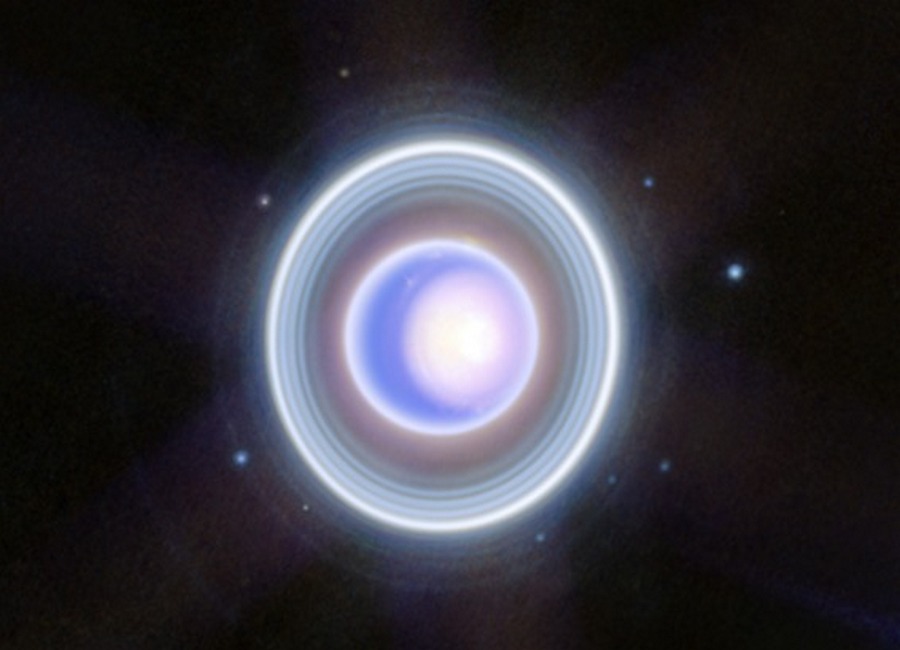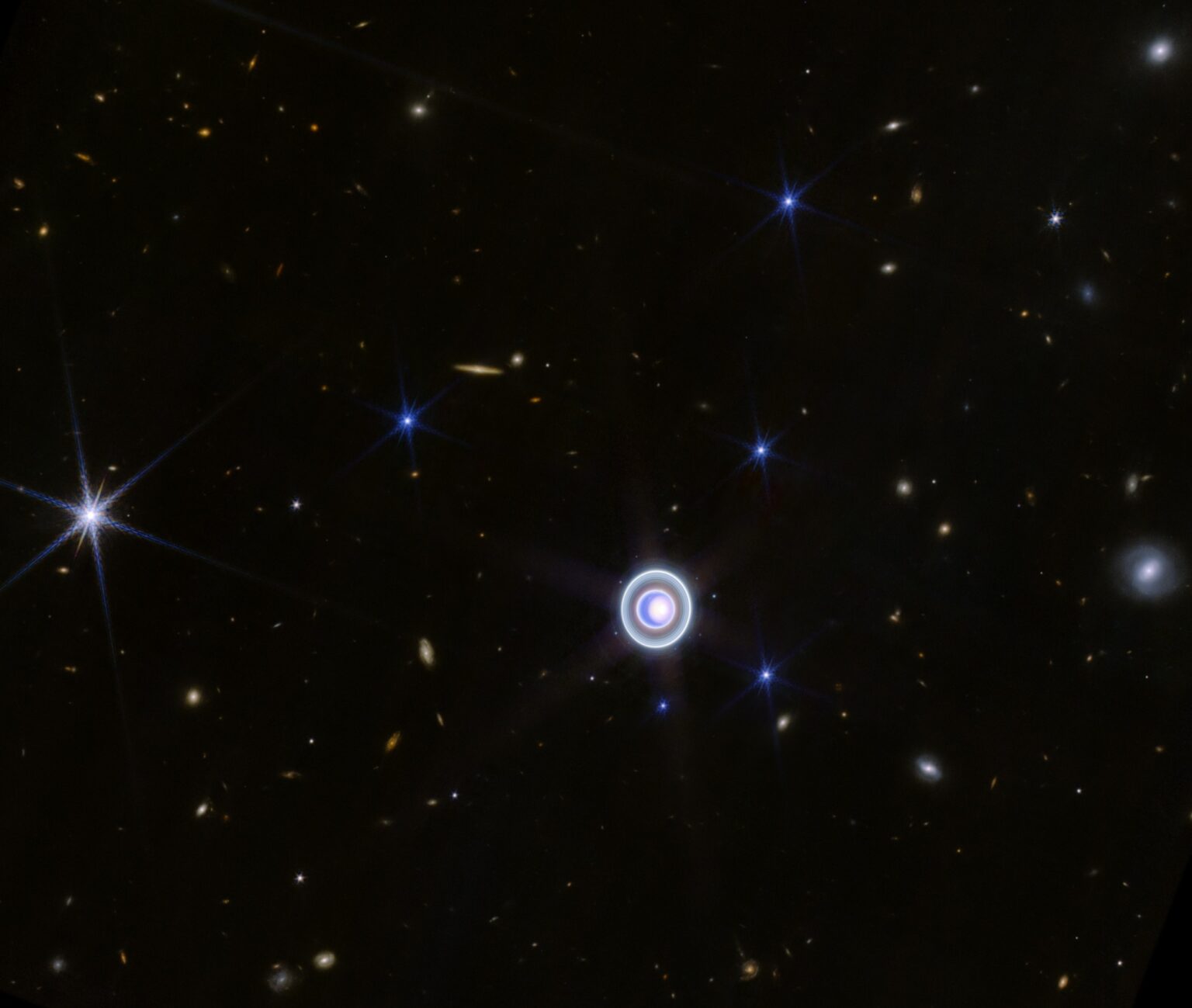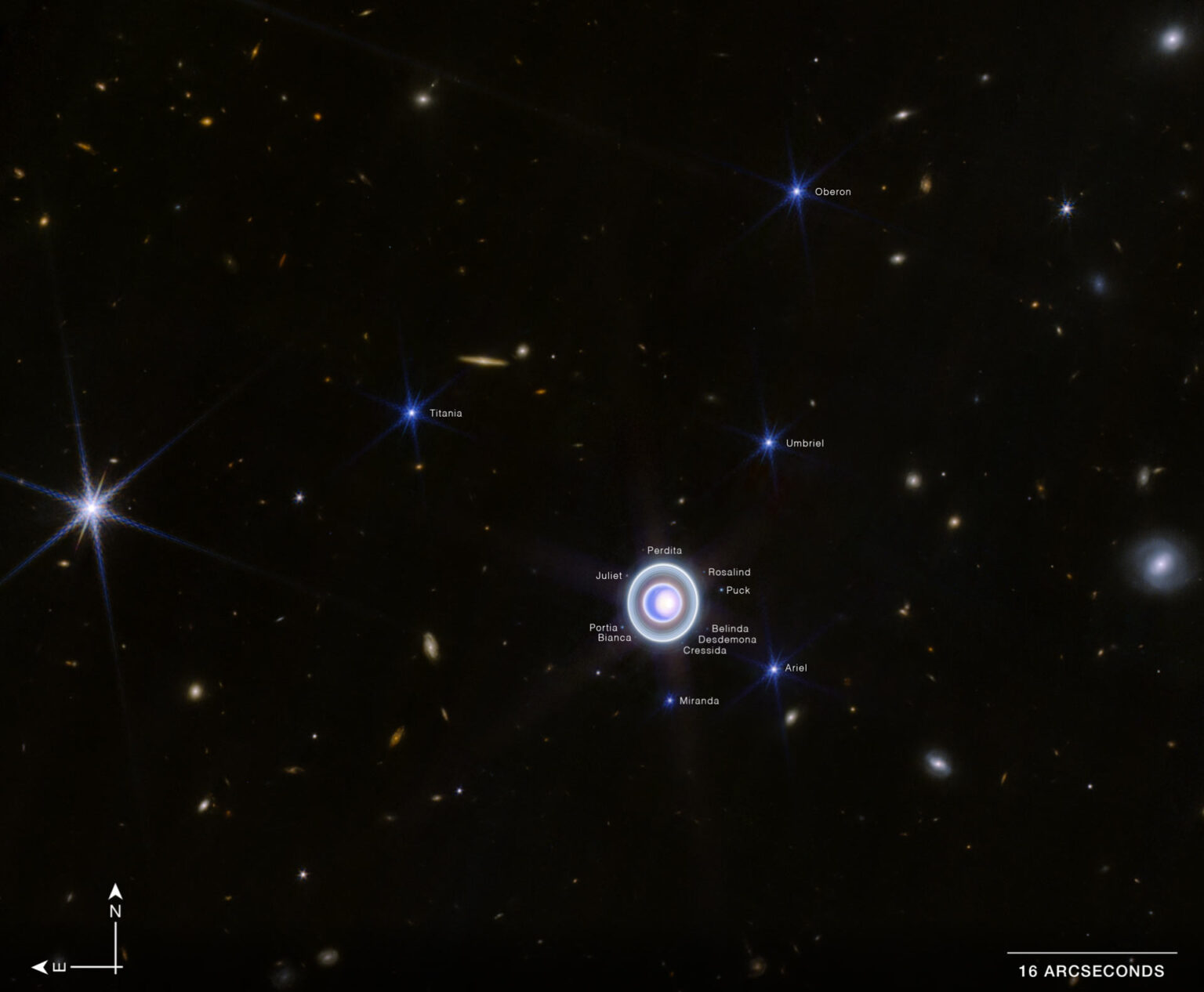This week, NASA released a fascinating holiday photo obtained with the James Webb Space Telescope. It shows the bright rings of the planet Uranus lying on its side. This may seem unexpected, as people do not usually associate this planet with rings, unlike the famous Saturn. However, due to the fact that the telescope’s equipment operates in the infrared range, these rings appear bright and detailed in the photo.

The NIRCam image of Uranus shows the planet and its rings in amazing detail. The image shows Uranus’s seasonal north polar cap, as well as the faint inner and outer rings, including the elusive ζ ring, which is extremely thin and located several hundred kilometres above the planet’s clouds.
The image shows the rings with even greater clarity than the previous image of Uranus released to the public earlier this year. It also shows the location of 27 of Uranus’ moons. Some of them are outside the rings, and some even penetrate the rings’ area.


The photo also shows the features of the planet’s surface — in particular, its icy polar cap. The bright dot is the centre of this icy region, while the darker area surrounding it represents the lower part of the cap. This weird phenomenon is explained by Uranus’ unusual orbital dynamics: its rotation axis is tilted by 97° relative to the orbital axis. This orientation means that the Sun practically never sets at the planet’s north pole during the long summer.
This extraordinary summer season in the northern hemisphere of Uranus lasts an incredible 21 years, causing changes in weather and atmospheric conditions. One of the poles receives a huge amount of solar energy, while the other remains in 21 years of darkness. This causes powerful storms to form, which can be seen in the image as bright dots along the lower edge of the ice cap.
Earlier, we explained why Jupiter does not have rings like Saturn.
According to NASA

